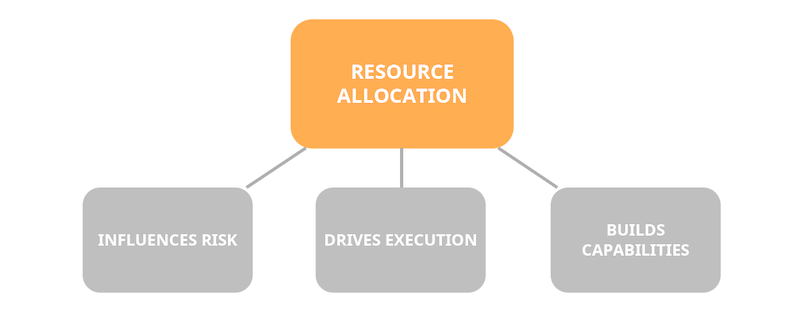By: Jesse Nieminen
It isn’t exactly easy to succeed in innovation. The vast majority of innovation attempts seem to fail and a mere 6% of executives are satisfied in their innovation performance, despite innovation generally being considered as very important for the future of their organization.
If there was a simple recipe for succeeding in innovation, we’d most certainly see numbers better than that. The challenge is that what works in one case doesn’t always work in others.
For example, Amazon and Apple are two of the largest companies in the world and both of them are celebrated for their ability to innovate, yet their philosophy towards innovation and organizational structures are fundamentally very different.
In our years of working with companies and researching the topic, we’ve, however, encountered a number of practices and mindsets that would seem to be true for the majority of top performers in managing innovation.
We call these the fundamentals for succeeding in innovation. I’ll share what they are to hopefully inspire some thoughts. If you think there are others, I’d love to hear from you in the comments below!
1. Innovation is a strategic endeavor
Innovation is generally defined as the “introduction of something new”, which in the context of an organization is about no more or less than shaping the future of the organization.
Few would argue that this sounds strategic, yet somehow when the rubber meets the road, many organizations don’t link innovation and strategy together in the practical work they do.
Great innovation work is guided by strategy, but it also works the other way around. The innovation process should be one of the key factors in shaping future strategy.
If innovation isn’t focused on helping the organization reach its strategic goals, most of the effort is likely to be in vain. Projects will simply struggle to get prioritized or financed due to there always being other priorities, which of course makes sense given that they are strategically more important.
 How to Turn Crowdsourced Ideas Into Business Proposals
How to Turn Crowdsourced Ideas Into Business Proposals
In October 2020, Pact launched AfrIdea, a regional innovation program supported by the U.S. Department of State. This was geared towards unlocking the potential of West African entrepreneurs, social activists, and developers in uncovering solutions to post-COVID challenges. Through a contest, training, idea-a-thon and follow-on funding, they sought to activate a network of young entrepreneurs and innovators from Guinea, Mali, Senegal, and Togo to source and grow innovative solutions. Learn their seven-stage process in the AfrIdea case study.
Get the Case Study
On the other hand, if innovation work isn’t being closely monitored by top management and if it isn’t used to shape future strategy, the organization can easily miss out on many important insights, as well as incredible opportunities that could help refine or define the strategy.
In the long run, neglecting these insights is likely to lead to the downfall of the entire organization. For example, while Kodak invented the digital camera, they didn’t embrace digital photography as the future until it was already too late.

Thus, innovation is always the responsibility of top management and should be treated as the strategic endeavour that it is.
2. Innovation is a resource allocation problem
In practice, innovation is typically a resource allocation problem.
There are two practical reasons for this.
First of all, there are almost always more ideas than can be implemented. The question is, which ones do you choose to implement and are you able to implement them well enough that they’re able to live up to their potential. An idea is, after all, worth nothing until properly implemented.
Thus, allocating enough of the right resources (talent, capital, time) and on the right ideas is paramount for building the capabilities for succeeding in innovation.
However, that alone isn’t enough as innovation is typically highly unpredictable. There’s a high chance that you will fail in many of your innovation activities, and while you can improve your odds by working smartly, you will still fail often.
So, accepting failure as part of the game, being willing to experiment, and having the courage to fail is a good starting point. With this mindset, you can start to look at ways to actually combat the risk that this unpredictability brings with it.

So, to reduce your risk, you should approach innovation the same way the best investors do: as a portfolio. The basic idea is that resources should be allocated to match your expected time horizon and rate of return for the investment with an acceptable level of risk.
When you apply this thinking for the entire portfolio, you will dramatically reduce the impact of individual failures on your overall performance.
So, as an innovation leader, you should remember that the most powerful tool for driving innovation performance is how you allocate the resources you have.
3. Managing innovation is different – but still management
I’ve heard quite a few people claim that you can’t manage innovation. They say that innovation is creative work and that the only way that it happens is when the conditions are right and there is enough time and freedom.
There is an element of truth in that. People are generally at their most creative when they are relaxed and distracted. As a result, only 3% of people have their best ideas at work.
However, they’re missing a crucial point: ideas are just the beginning. A rough idea is far from being a profitable innovation. To get there, you still need to implement the idea, which requires certain capabilities, especially in today’s complex world where even individual geniuses are unlikely to succeed alone.
Furthermore, when you have tons of ideas as an organization, you need to somehow collect, refine, evaluate and prioritize them before you’re ready to choose the ideas to actually pilot or implement.
So, while you probably shouldn’t manage innovation exactly the same way you would an assembly line, that doesn’t mean you shouldn’t manage it all.

According to Eric Schmidt, the ex-CEO of Google, the most innovative companies are in a constant state of “managed chaos”. They have an environment where people have lots of freedom for coming up with ideas, and even testing them out without prior permission, but they contrast that with a very rigorous and disciplined decision-making process for quickly killing off the ideas that don’t work.
The best managers don’t try to control everything, they focus on showing direction, building the right systems for progressing ideas, and on finding ways to remove barriers that hinder innovation.
What’s more, these principles aren’t used just by internet companies. Controlled chaos as the source of innovation was, for example, the theme of this 1985 HBR article by professor Quinn from Dartmouth College.
4. Innovation should be both top-down and bottom-up
For the reasons mentioned above, innovation has to be both top-down and bottom-up.
If top management doesn’t provide guidance and direction, as well as adequate resources, or doesn’t remove barriers for innovation, it’s very hard for individual teams to innovate in the context of a large organization.
On the other hand, without the creativity born from diverse points-of-view, as well as the insights derived from the front-line on customer behaviour and challenges, there’s a much higher risk of failure. Organizations should, without a doubt, find ways to tap into these insights and use them to both come up with new innovations and refine the ones they’re already working on.
While breakthrough innovations often steal the spotlight, it’s often the hundreds or thousands of small incremental improvements, which usually originate from the front-lines, that actually contribute the most towards the bottom-line. It’s not uncommon to see more than 70% of the total business value of innovation originate from these incremental innovations.
Thus, while it’s in the long-term crucial to pursue those big breakthrough innovations, engaging employees in bottom-up innovation, which typically is more incremental by nature, should also be on the list for every company looking to innovate.
5. Innovation is ultimately about creating value
With the technological progress that we’re making, it’s sometimes easy to get carried away with the future potential of emerging technologies.
Who wouldn’t be excited about all the possibilities that artificial intelligence (AI), nuclear fusion and quantum computing can bring us?
While the use of technology is often a key piece in many innovations, it’s never enough by itself. Technology is just a tool for solving problems and creating value. Without the right problems and a good value proposition, you don’t have an innovation.
On the other hand, there are plenty of examples of innovations that don’t really involve the use of new technology at all, such as business model innovations like the subscription model used by Dollar Shave Club.
So, remember that innovation is simply a novel way of combining things, both new and pre-existing, to create value for your customers, not the process of inventing something new.
6. Innovation takes hard work and persistence
The old adage by Edison says that genius is 1% inspiration and 99% perspiration, as embodied by the thousands of attempts it took him to figure out the right materials to make the lightbulb work.
The same certainly applies for innovation. Even though there’s often plenty of serendipity involved in innovation success, you still have to make your luck by putting in the work and persisting through the challenges you’ll inevitably face.
Being intimately familiar with all of the challenges that your customers are facing, as well as the opportunities that the ever improving technology and the evolving ecosystems provide, certainly takes a lot of work but if you get there, your chances of success will be dramatically higher.

7. Learning is paramount for innovation
Last but not least, an innovative organization is all about continuous learning.
The novel insights and ideas that drive innovation always originate from learning something.
Maybe you’ve learned about a new challenge that your customers are facing, maybe you’ve learned to use a new technology like AI, or maybe you’ve learned of a new business model that someone in another industry has created. Learning is the inspiration and catalyst for innovation.
So, to create an innovative organization, you have to cultivate curiosity and learning across all levels of your organization.
If every employee keeps their eyes open and wants to constantly learn and get better at what they do and help the organization achieve the same, you’ll be well on your way to making more innovation happen.
The most innovative organizations know this and create systems that reinforce this mindset and extract customer value from this continuous stream of new ideas and insights.
By Jesse Nieminen
About the author
 Jesse Nieminen is the Co-founder and Chairman at Viima, the best way to collect and develop ideas. Viima’s innovation management software is already loved by thousands of organizations all the way to the Global Fortune 500. He’s passionate about helping leaders drive innovation in their organizations and frequently writes on the topic, usually in Viima’s blog.
Jesse Nieminen is the Co-founder and Chairman at Viima, the best way to collect and develop ideas. Viima’s innovation management software is already loved by thousands of organizations all the way to the Global Fortune 500. He’s passionate about helping leaders drive innovation in their organizations and frequently writes on the topic, usually in Viima’s blog.
Featured image via Unsplash.


